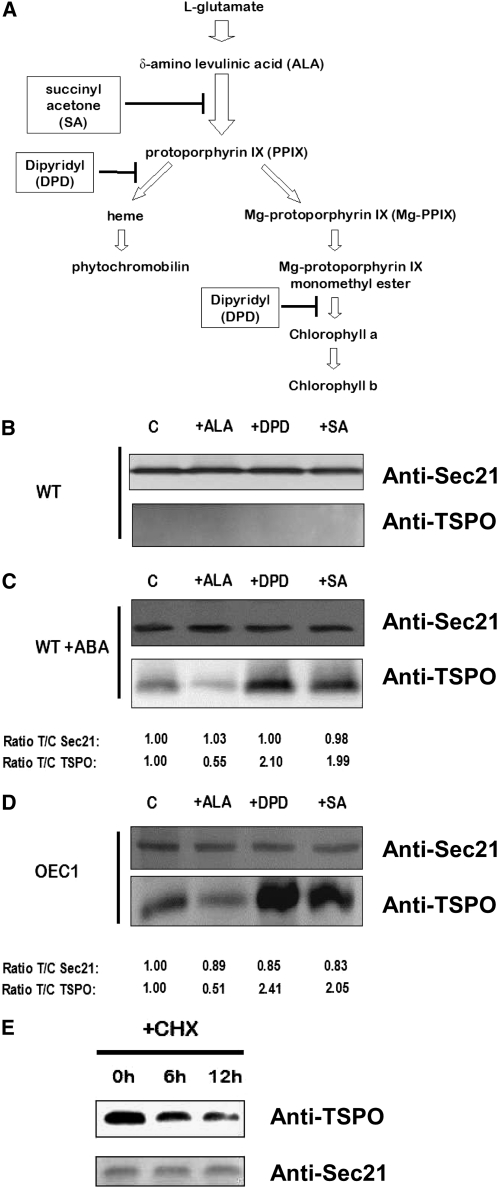Figure 1.
At-TSPO Is Regulated by Tetrapyrrole Metabolism.
(A) Simplified scheme of the tetrapyrrole biosynthetic pathway in the plant chloroplast, the pharmacological agents used, and the specific steps inhibited.
(B) Arabidopsis suspension-cultured cells were incubated for 24 h in the dark in the presence of 5 mM ALA, DPD, or SA. Control cells (C) were incubated in the presence of DMSO (mock, solvent used to dissolve the chemicals). Total proteins were extracted and analyzed by immunoblotting (IB) for TSPO using the Arabidopsis Golgi protein At-SEC21 (γ COPI) as loading control.
(C) Arabidopsis suspension cells were preincubated in 50 μM ABA for 24 h before being subjected to the same treatments and analyses as in (B), and the signal for both SEC21 and TSPO in each treated sample was compared with that in the control as a treated/control ratio (T/C) (bottom lines). The TSPO/SEC21 ratio (ratio of the ratios) was 0.5 with ALA, 2.1 with DPD, and 2 with SA.
(D) A transgenic line (OEC1) overexpressing At-TSPO was treated as in (C). The TSPO/SEC21 ratio was 0.6 with ALA, 2.8 with DPD, and 2.5 with SA.
(E) A transgenic cell line as in (D) was incubated in presence of the protein synthesis inhibitor CHX (100 μM) and immunoblotted for TSPO and SEC21 analyzed at different time points.
The results in (B) to (D) are representative of those obtained in at least three separate experiments. The results in (E) were reproduced twice. WT, Wild type.

